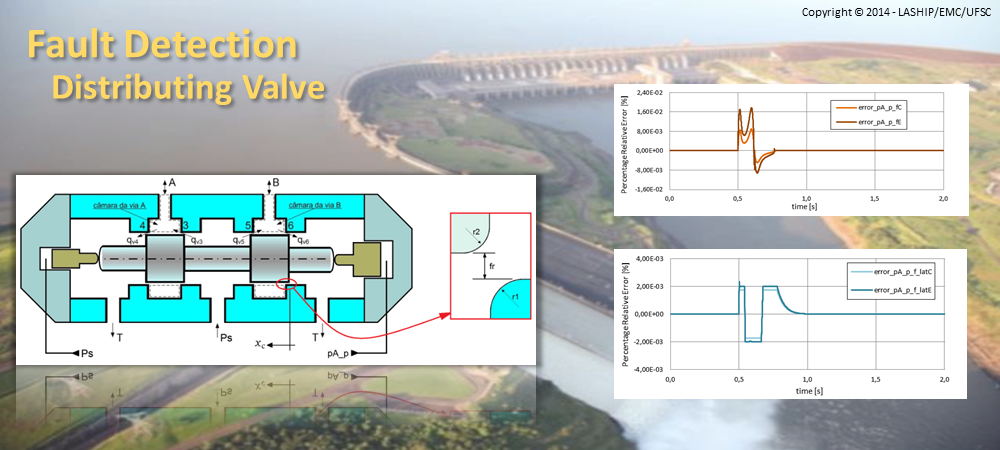Candidate: Pablo Sebastián Zanón
Program: UFSC / POSMEC
Date: March, 2014
Advisor: Victor Juliano De Negri
Abstract: The operations of different technical processes, many of them complex and with a high degree of automation, need to be reliable and safe. The continuous and progressive technological advancement allowed providing tools for developing supervisory systems which enable monitoring the processes and manage predictive maintenance, with detection and diagnosis of faults. In the area of electricity generation that is more than evident. Having energy availability in quantity and quality is a vital subject. The array of power generation in Brazil is basically constituted by hydropower plants. A protagonist component that participates in this action of generation is the distributing valve. It has the function of acting in the speed regulation of hydraulic turbine system. The present work aims to contribute with a tool and knowledge that can help to anticipate future problems through a fault detection system in distributing valves. For this, a model of the valve using geometric parameters and descriptive parameters of the flow is developed, which allows to analyze the internal behavior and to calculate the forces acting on the valve spool. A double and parallel modeling of construction is done, with the aim of representing and simulating a fault detection system based on the mode of “Parity Equation”, where one of the models is the valve in good condition, and the second, by changing the parameter values, represents the valve in a fault situation. The internal wear phenomena is represented by varying the geometric parameters, as being the increase of radial clearance between spool and sleeve, and rounding the angle of edges, in particular the involved edges that open and close the main valve orifices. Problems related to abnormalities in the operating force of the spool, as the lost equalization of pressures in the lands of the spool are represented by variations of dynamic factors. Generating different modifications of parameter values, different pilot pressures of the spool are obtained, which are the output values of the models. With this is possible to perform comparisons and to evaluate the influences that these changes had on the deviation from the ideal behavior characteristic of the healthy condition of the valve.
Keywords: Hydropower plants, Distributing valves, Hydraulic control valves, Predictive Maintenance, Fault Detection, Condition Monitoring.
ZANÓN, P. S. Modelagem e simulação de um sistema de detecção de falhas em válvulas distribuidoras. 2014. 188 p. Dissertação (Mestrado em Engenharia Mecânica). Universidade Federal de Santa Catarina, Florianópolis.



